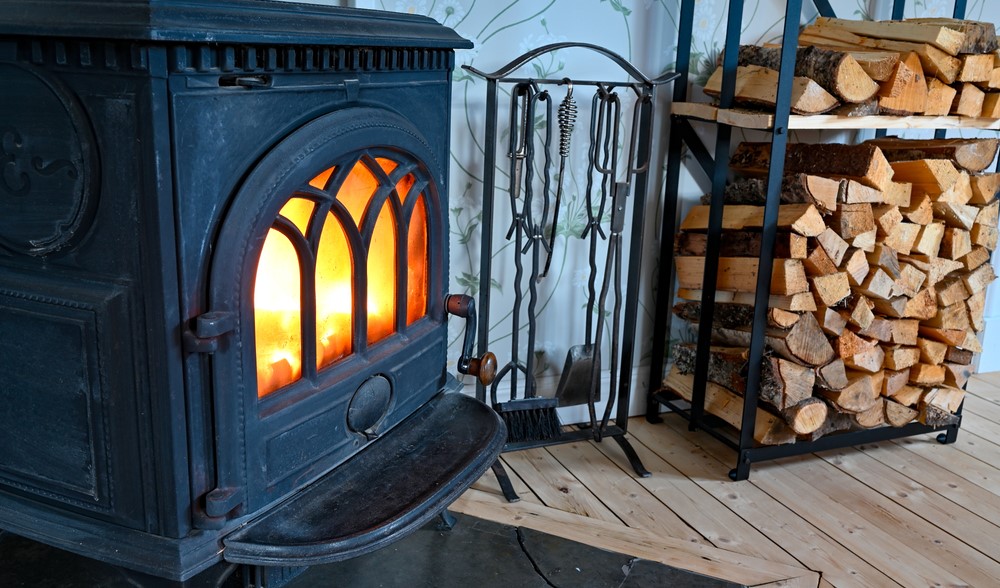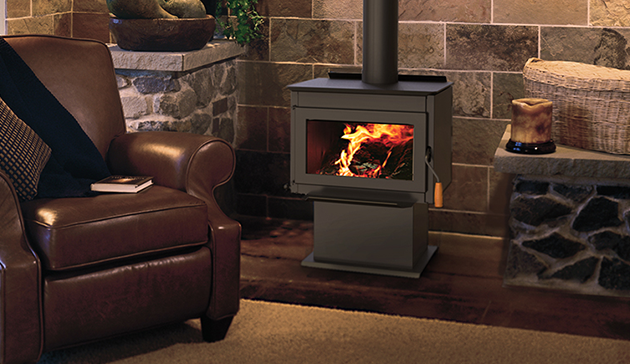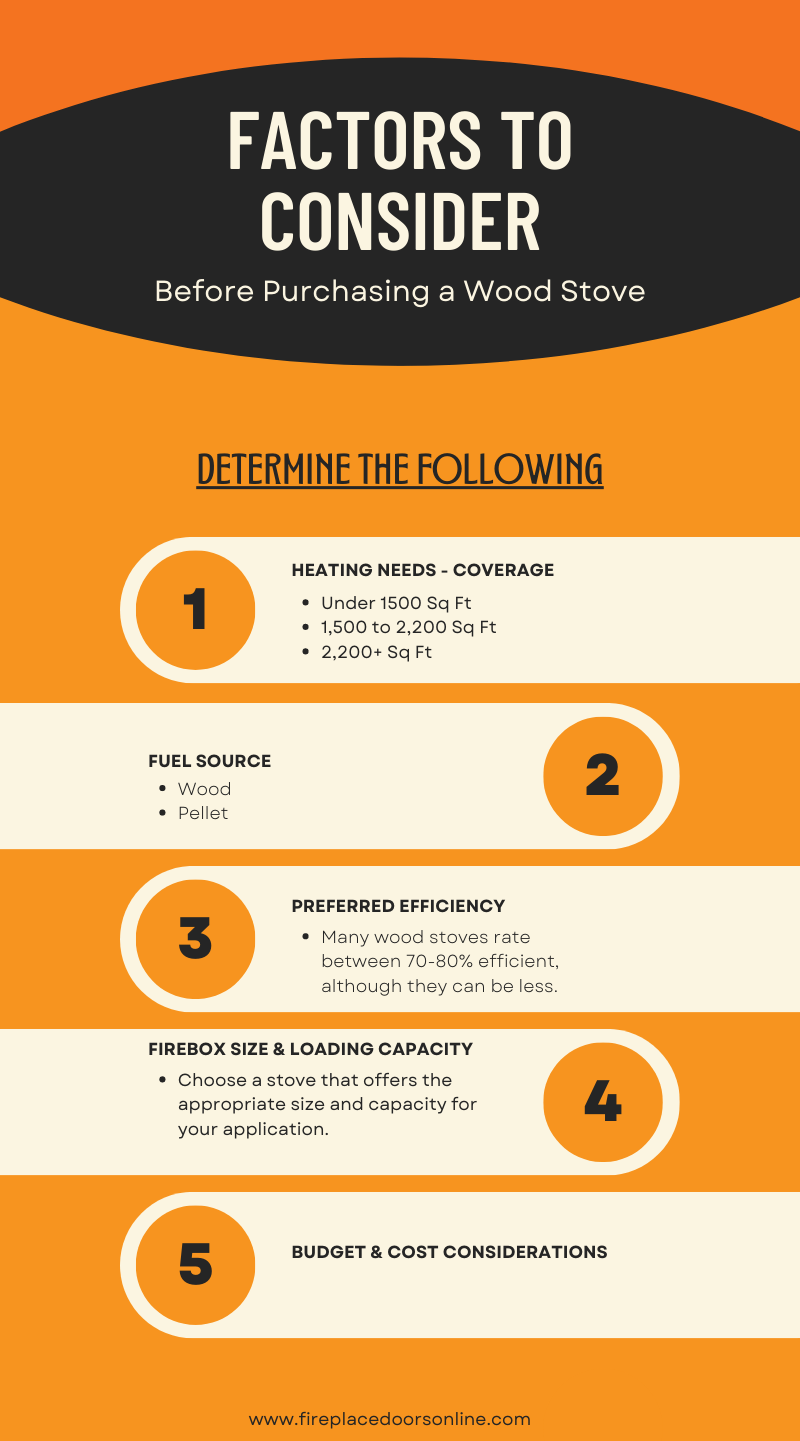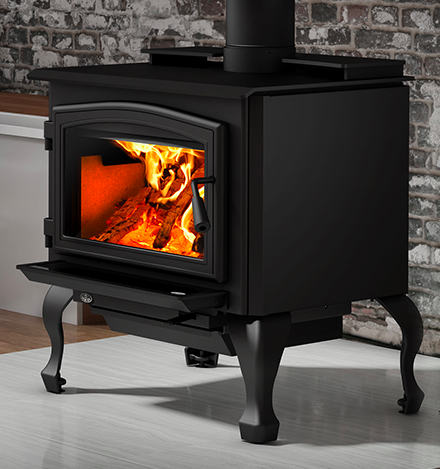Wood Burning Stoves and Fireplace Inserts
Wood burning stoves and fireplace inserts have been trusted for centuries as a reliable and efficient source of heat. Whether you're looking to reduce your reliance on traditional heating systems, create a cozy ambiance, or simply enjoy the crackling sounds and pleasant aroma of a wood fire, a wood burning stove or insert can be a fantastic addition to your home. With numerous options available, it's essential to understand the various factors to consider before making a purchase.
This guide aims to provide you with essential information, tips, and insights to help you navigate through the buying process and find the perfect wood burning stove or insert that suits your needs and preferences. From understanding different types of wood stoves to evaluating size and capacity requirements, and from considering efficiency and emissions ratings to installation and maintenance considerations, this guide covers all necessary aspects to make an informed decision and enjoy the many benefits of owning a wood burning appliance.
The Evolution of Wood Stoves
Wood stoves have evolved significantly over the centuries. Early versions were simple iron boxes with chimneys, capable of producing significant heat. Over time, they have transformed into efficient heating machines with advanced technology, ensuring better performance and safety. Today’s wood stoves offer both functionality and aesthetic appeal, becoming a centerpiece in many homes.
Benefits of Using a Wood Stove or Insert
Natural Warmth and Ambiance: Wood stoves and inserts provide a natural, radiant warmth that creates a cozy atmosphere. The sight and sound of a crackling fire can make any space feel inviting and comfortable.
Backup Heat Source: During power outages, a wood stove or insert can be a lifesaver, providing heat without the need for electricity.
Energy Independence: By using a renewable resource like wood, you can reduce your reliance on traditional heating methods and lower your energy bills.
Increased Home Value: Installing a wood stove or fireplace insert can enhance the value of your home, making it more attractive to potential buyers.
How Wood Stoves Work
A wood stove operates by burning wood to produce heat, which is then radiated into the room. Here's a step-by-step explanation of how a wood stove works:
- Loading the Wood: Wood is loaded into the firebox of the stove.
- Ignition: The wood is ignited, and as it burns, it produces heat.
- Combustion: Air enters the firebox through vents, ensuring that the wood burns efficiently and completely.
- Heat Exchange: The heat from the burning wood is absorbed by the stove's material (usually cast iron or steel) and radiated into the room.
- Exhaust: Smoke and gases produced by the combustion are vented through a chimney pipe, ensuring that they are safely expelled from the home.
Installing a Wood Stove
Installing a wood stove involves several key steps to ensure safety and efficiency:
- Location: Choose a location that provides adequate clearance from combustible materials.
- Stove Pipe Installation: Use black stove pipe (either single or double wall) to connect the stove to the first ceiling height.
- Chimney Pipe Installation: From the first ceiling height, switch to Class-A chimney pipe to safely vent the exhaust through the roof.
- Safety Inspection: Ensure all connections are secure and meet local building codes. It's recommended to have a professional install the stove to ensure safety and compliance.
Wood Burning Fireplace Inserts
Fireplace inserts are designed to fit into an existing fireplace, converting it into an efficient heating source. Here’s how a wood burning fireplace insert works:
- Firebox: The insert has its own firebox where wood is burned.
- Heat Exchange: The insert heats the surrounding air, which is then blown or radiated into the room.
- Exhaust: Smoke and gases are vented through the existing chimney.
Installing a Wood Burning Fireplace Insert
- Measurement: Measure your existing fireplace to ensure the insert will fit properly.
- Chimney Liner: Install a stainless steel chimney liner that matches the flue outlet on the insert to ensure optimal draft and efficient venting.
- Inserting the Unit: Place the insert into the fireplace opening and connect it to the chimney liner.
- Sealing and Insulation: Seal any gaps around the insert to ensure no heat escapes into the chimney.
- Safety Check: Ensure everything is securely installed and compliant with local building codes. Professional installation is recommended for safety.
Key Considerations Before Buying
Heating Needs and Size of the Space
- Heating Needs and Space Size: Assess the area you need to heat. Small wood stoves are ideal for tiny cabins or rooms, while larger stoves are better suited for spacious living areas. Choosing the right size ensures efficient heating.
- Fuel Sources: While traditional wood is a common fuel, some stoves also burn wood pellets. Consider what fuel type is readily available in your area and suits your lifestyle.
- Budget: Wood stoves and inserts vary in price. Determine your budget beforehand and look for options that offer the best balance between cost and quality.
Types of Wood Stoves
Traditional Wood Stoves:
These stoves are classic and straightforward, requiring manual loading of firewood. They come in various designs, from rustic to modern, and offer reliable heat.
Catalytic and Non-Catalytic Stoves:
Catalytic stoves use a catalytic combustor for more efficient burning, while non-catalytic stoves rely on insulation and secondary air supplies. Each type has its own advantages, so the choice depends on your preferences for maintenance and efficiency.
Choosing the Right Size and Capacity
Determining BTU Requirements
BTU, or British Thermal Units, is a fancy way of measuring how much heat output you need from your wood stove. To determine the right BTU for your space, consider factors like insulation, ceiling height, and desired temperature. It's like solving a math equation, except this time it's actually useful in real life.
Estimating Heating Area
Are you living in a cozy studio apartment or a sprawling mansion? The size of your space plays a role in determining the heating area your wood stove should cover. You don't want to feel like you're hugging the stove just to stay warm, so be sure to calculate the square footage you want to heat. It's like playing a game of "guess how many cookies are in the jar," only the prize is a toasty room and not a sugar rush.
Evaluating Firebox Size and Loading Capacity
Last but not least, consider the firebox size and loading capacity of the wood stove. You don't want to constantly feed it like a hungry pet or have to wrestle with giant logs that don't fit. Find a wood stove with a firebox size that accommodates your wood-splitting skills and loading capacity that suits your laziness level. It's like finding the perfect pair of jeans - you want them to fit just right without any unnecessary struggles.
And there you have it, folks! A witty and informative guide to buying a wood stove. Now go forth and channel your inner lumberjack (or lumberjill) as you embark on the journey of finding the perfect wood stove for your cozy abode. Stay warm and keep those fires burning!
Understanding Efficiency and Emissions Ratings
Efficiency Ratings and Their Significance
When it comes to wood stoves, efficiency is the name of the game. Efficiency ratings tell you how effectively the stove converts wood into heat, which is important for both your comfort and the environment. The higher the efficiency rating, the more heat you'll get from every log you burn. So, if you want to make the most of your firewood stash and keep your heating costs down, look for a stove with a high efficiency rating.
EPA Emissions Standards and Certifications
Nobody wants to feel guilty about warming their toes by the fire, which is why emissions standards are crucial. The U.S. Environmental Protection Agency (EPA) sets limits on the amount of air pollution that wood stoves can produce. Choosing a wood stove that meets these standards ensures that you're not filling your home with harmful pollutants. Look for EPA-certified stoves, which have undergone testing to ensure they meet these guidelines.
Features and Accessories to Look for in a Modern Wood Burning Stove
Air Wash System for Glass Door Cleaning
There's nothing worse than a beautiful fire being hidden behind smudged and sooty glass. To keep your view crystal clear, look for a wood stove with an air wash system. This nifty feature uses a stream of preheated air to keep the glass clean, so you can enjoy the sight of dancing flames without the need for constant glass cleaning. This is one of the many benefits of modern wood stoves.
Adjustable Damper and Heat Output Control
Sometimes you want to cozy up by a roaring fire, and other times you just need a gentle warmth. That's where an adjustable damper and heat output control come in handy. These features allow you to regulate the amount of air entering the stove, giving you control over the intensity of the fire. So, whether you're looking for a toasty atmosphere or a more subdued ambiance, having these options at your fingertips will make all the difference.
Ash Pan and Removable Grates for Easy Cleaning
Let's face it, cleaning a wood stove can be a messy task. But fear not! Look for a wood stove with an ash pan and removable grates. These handy features make the cleanup process a breeze. The ash pan catches the ashes, making disposal easier, while the removable grates allow for quick and efficient cleaning. Trust us, anything that simplifies the chore of maintaining your wood stove is worth its weight in gold.
Blowers
If you are looking to get as much heat as possible, get a wood burning stove with blower. The stove blower will greatly improve the heat circulation and increase your stove's effective heating area. Many stoves offer an optional blower upgrade and it is an option you shouldn't pass up!
Top Brands and Manufacturers
When it comes to purchasing wood stoves, the process can often be complicated by unclear information and difficult ordering systems. At Fireplace Doors Online, we strive to make your buying experience quick and easy by providing detailed product specs, manuals, and installation instructions directly on our website.
- Since 1979, Osburn has been synonymous with high-quality wood stoves and inserts. Renowned for their durability and performance, Osburn offers a full line of products to suit various heating needs. Whether you're looking for a traditional wood stove or a modern insert, Osburn has a solution for you.
- IronStrike, produced under Innovative Hearth Products (IHP), offers a range of mid to high-tier wood stoves and inserts. Known for their sleek and modern designs, IronStrike stoves combine functionality with contemporary aesthetics. Explore the complete IronStrike collection at Fireplace Doors Online.
- Breckwell Hearth is another top manufacturer known for its reliable and efficient wood stoves. With a focus on innovation and quality, Breckwell offers a range of stoves designed to provide maximum heat output while maintaining an environmentally friendly footprint.
- Buck Stove has a long history of producing durable and efficient wood stoves. Known for their robust construction and classic designs, Buck Stove products are a reliable choice for anyone looking to add a wood stove to their home.
- Empire Stove specializes in high-efficiency wood stoves that are both stylish and functional. Their products are designed to deliver superior heating performance while enhancing the aesthetic appeal of any space.
- Invicta wood stoves are celebrated for their craftsmanship and elegant designs. Made in France, these stoves combine traditional techniques with modern technology to provide efficient heating solutions that are also visually stunning.
At Fireplace Doors Online, we proudly offer a wide selection of products from these top brands, ensuring you have access to the best wood stoves and inserts on the market. Explore our range today and find the perfect solution for your home heating needs.
Installation and Safety Considerations
Compliance with Local Building Codes and Regulations
Before you start installing your wood stove, it's important to ensure that you're in compliance with local building codes and regulations. These guidelines are in place to keep you safe and ensure that your installation is up to standard. So, double-check the requirements in your area to avoid any headaches down the road.
Proper Ventilation and Chimney Requirements
Ventilation is crucial when it comes to wood stoves. Improper venting can lead to dangerous situations like carbon monoxide buildup. Make sure you have the right chimney and venting system for your wood stove to ensure proper airflow and safe operation. It's always better to be safe than sorry, especially when it comes to your home and your health.
Fireproof Flooring and Clearance Requirements
We all love a cozy fire, but nobody loves a house fire. To prevent any unwanted mishaps, it's important to adhere to clearance requirements and have a fireproof flooring in place. Wood stoves can generate a significant amount of heat, so maintaining proper clearance from combustible materials is crucial. Additionally, a fireproof floor will protect your home from any sparks or embers that may escape the stove. Safety first, folks!

Maintenance and Care Tips for Wood Stoves
Regular Chimney Cleaning and Inspections
Just like any other appliance, wood stoves require regular maintenance to keep them running efficiently and safely. One essential task is regular chimney cleaning and inspections. Over time, creosote buildup can occur in the chimney, increasing the risk of chimney fires. A professional inspection and cleaning can help prevent such hazards and ensure that your wood stove operates at its best.
Proper Wood Storage and Seasoning
To get the most out of your wood stove, it's important to use properly seasoned firewood. Seasoned wood has been dried for at least six months, reducing its moisture content and improving its burning efficiency. Store your firewood in a dry, well-ventilated area and allow it enough time to season properly. Trust us, your wood stove will thank you.
Routine Cleaning of the Stove and Components
Last but not least, routine cleaning of your wood stove is essential for its longevity and performance. Regularly remove any ashes or debris from the stove, clean the glass door, and inspect the gaskets and seals for wear and tear. A little bit of maintenance goes a long way in keeping your wood stove in tip-top shape and ensuring that it serves you well for years to come.
So, there you have it – a wood stove buying guide that covers everything from efficiency ratings and emissions standards to installation considerations and maintenance tips. Armed with this knowledge, you'll be well-prepared to choose the perfect wood stove for your home. Now, go forth and enjoy the warmth and charm of a cozy fire!In conclusion, investing in a wood stove can bring warmth, comfort, and cost-effective heating to your home. By carefully considering factors such as your heating needs, available fuel sources, and budget, you can choose the right wood stove for your space. Understanding efficiency and emissions ratings, as well as selecting the appropriate size and capacity, ensures optimal performance and environmental friendliness. Additionally, paying attention to features, accessories, and safety considerations will enhance your overall wood stove experience. With regular maintenance and care, your wood stove will continue to provide you with reliable heat and a cozy atmosphere for years to come. So, get ready to enjoy the timeless charm and practicality of a wood stove as it becomes the heart of your home.
Frequently Asked Questions About Wood Burning Stoves And Wood Burning Inserts
Q: What are the benefits of a wood burning stove or insert?
A: They provide natural warmth, serve as a backup heat source, offer energy independence, and can increase your home's value.
Q: How do I choose the right size stove or insert?
A: Consider the size of the area you need to heat and match it with the stove’s heating capacity.
Q: What types of fuel can wood stoves and inserts use?
A: Most use traditional firewood, but some models can burn wood pellets.
Q: Are pellet stoves more efficient than traditional wood stoves?
A: Yes, pellet stoves are typically more efficient and produce fewer emissions.
Q: What is the difference between catalytic and non-catalytic stoves?
A: Catalytic stoves use a catalytic combustor for efficient burning, while non-catalytic stoves rely on secondary air supplies.
Q: Can I install a wood burning stove or insert myself?
A: Professional installation is recommended to ensure safety and compliance with local codes.
Q: How often should I clean and maintain my wood stove?
A: Regular maintenance and annual professional inspections are recommended to keep your stove operating safely.
Q: Do wood stoves require a lot of wood?
A: The amount of wood needed depends on the stove's efficiency and the frequency of use.
Q: Are wood stoves environmentally friendly?
A: Using sustainably sourced wood and modern, efficient stoves can minimize environmental impact.
Q: How do wood burning fireplace inserts work?
A: Inserts fit into existing fireplaces, improving their efficiency by providing better heat output and reducing heat loss. They require a stainless steel chimney liner for optimal draft and venting.



